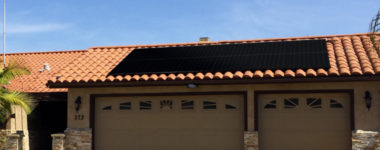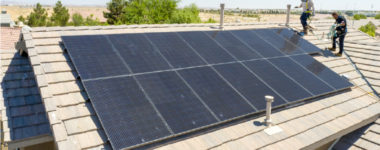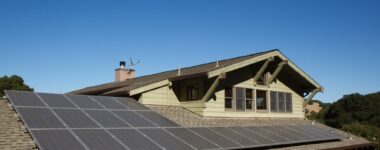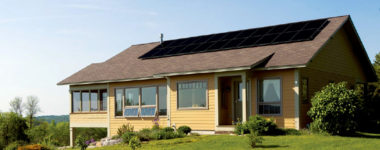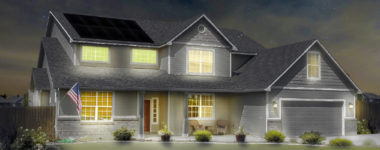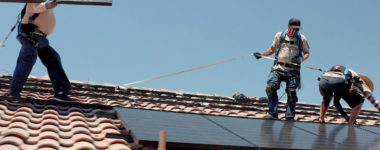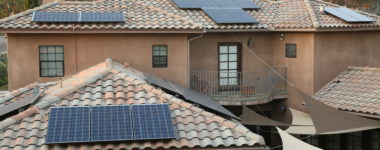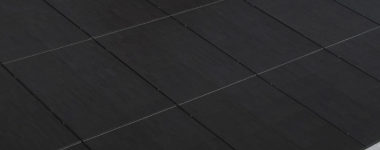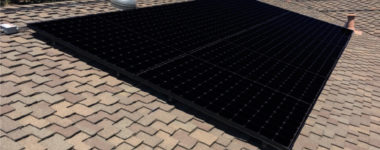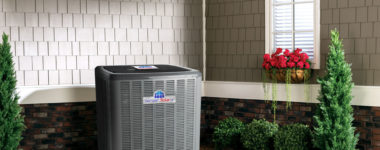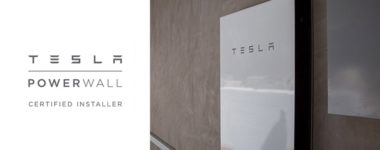Semper Solaris Blog
Solar rooftop installations are a booming business. And Chula Vista residents are taking advantage of available tax incentives and rebates to install solar systems and save money on electricity. But solar rooftop panels for lower bills are only one aspect of the potential of residential solar power. You can extend the usefulness of your solar installation in resourceful ways from backup systems to heating your pool. Adding extra panels to your solar installation will enhance the potential of your solar system now while making space for future innovations in solar technology. Smart ways to use your solar energy. Adding extra panels in various ways to your system will make room for innovative new apps and gadgets that will increase your need for electricity. More is less in terms of added value and money saved now and in the future. Why not add extra panels to expand the potential of your solar power system? It may cost a little more upfront but be cheaper than adding them later. It will not only increase the value of your home, with rebates and incentives available now; it is good to strike while the iron is hot. Take a look at these creative ideas for using the energy that you get from your solar panels: Backup Systems The addition of a backup battery to your solar system will enable you to store extra power for your home when your panels are not generating enough electricity and avoid pulling more from your utility company at a higher cost. Or, be prepared for emergencies when the grid goes down. Have Semper Solaris install an Enphase Encharge Battery or Tesla Powerwall backup battery to ensure you have the surplus power when you need it and move you towards energy independence. Smart Home Installation of solar allows you to take advantage of many products and services that will help you get the full benefit of your Solar installation. Apps that monitor your solar power usage and keep track of power routed back into the grid Tweak your power usage by identifying which devices or appliances in your home use the most power. Program appliances like your refrigerator to use energy when the rates are lower. Access the appliances and services in your home even if you are miles away. Solar Water Heater A solar water heater uses the power of the sun to heat the water in your home. It is another good reason to extend the capabilities of your solar system from the beginning. The extra panels could pay for themselves just by reducing the cost of hot water. Solar Pool Heating There are over 300 houses with pools for sale in Chula Vista, and that is only the tip of the iceberg. That is a lot of electricity, and it is expensive. If you have a pool, the addition of solar panels for your pool is a bonus to your solar installation. A solar pool heating and filtering system will allow you to heat your pool and spa and enjoy it year-round without breaking the bank. Car Power Whether you have an electric powered car now or plan to have one in the future, having an EV charging station is something that you might consider when installing solar panels. Adding extra panels will leave room to expand and accommodate the future of automotive energy. Another move towards energy independence. Solar Porch Ever thought about using solar panels as the roof of your covered patio? This extension of your system will provide shade and filtered light while generating power. Be sure to have the foundation of the patio inspected to make sure it can hold the panels, then enjoy your summer barbecue outdoors. Impress your guests. Solar Window Awnings On those upstairs windows, you know the ones that endure the beating rays of the sun, especially in the late afternoon? Why not install solar panel awnings as an extension of your system that will provide shade on those windows while generating power and reducing the need for the air conditioning? Solar Carport Solar Carports are an easy way to add more panels to your rooftop installation. If you have an RV or boat, you can extend the carport at an angle to shade the area-- a fun way to add recreational space to your home right next to your EV station. Solar Skylight Add some eye candy to your home by having solar panels integrated into your roof to double as skylights. They will enhance the look of your home while generating clean energy and reducing the need for added light during the day. The Future of Solar More innovative ways to extend and use this fantastic energy resource are on the horizon as technology gives way to bigger and better ideas. Going solar isn’t just about saving money or reducing your carbon footprint. It is also about seizing the future of technology and energy independence. The added value of having extra capabilities in your system goes a long way towards that end. Semper Solaris is on the frontier, leading the way when it comes to residential solar power. Call us today - (888) 210-3366 - and begin the journey into the future of solar on the rooftop and beyond.
You have done the research. California is an great place to install solar panels. Is it right for you as a homeowner? The information provided here will help you to know about the value of solar power in California. It will also help you make a well-informed decision about installing solar panels on your home. Let's review all of the reasons why you should consider going solar in the great state of California. Solar Power in California: What You Need to Know Solar energy is not a new concept in our beautiful state. In fact, California is the number one solar state, and has been for quite some time. Hundreds of thousands of people have been employed across California to install solar panels on residential and commercial buildings. The solar panel installation industry has continuously gained popularity over the past few years. Solar panels that were installed across California in that time have been able to produce over 15,000-megawatts of energy. Over 3.75 million homes use solar energy to power their homes. Usage of solar energy can be made easy with NEM The use of solar power by the owners of solar homes in California can be measured easily by using a unique billing system known as NEM or Net Energy Metering. When a home solar system produces more energy than the consumption of its owners, then NEM can help in crediting the retail value of the surplus energy supplied back to the grid. Homeowners can use these credits on the days when they are not able to produce power due to lack of daylight. However, the policy of Net Metering used in California cannot be used in all cases because some of the solar panel installation services in this state have made it easier for the homeowners to use NEM. They ensure that all clients can use the advantages of this policy by handling the documentation required for this purpose. Installation of solar panels in California So, if you have decided to install solar panels on your home in California, after going through all of your research, get in touch with Semper Solaris to get your project started. Join the California solar community today!
Solar panels have many advantages, and saving money is definitely one of them. Using solar energy in place of grid electricity can save money on the monthly electricity bills. Though solar panel installation is quite an investment, the overall benefit offsets the one-time high investment. If you plan to stay in the same house for long enough, you can quickly recoup the investment on solar power panels in a few years. Moreover, with battery storage, you can save the extra electricity generated by your solar panels and use it in place of regular grid power. Semper Solaris is a Tesla Powerwall Certified Installer, so you can be sure that you will have a top-of-the-line battery installed! Now, most utilities allow consumers to sell solar power to them. Either way, you can save money through the power generated by the solar panels installed on your property. Solar power also saves you money when the electricity goes off for a more extended period, such as during a storm or forest fire. The solar energy not only supplies power to your house and allows it to function without any significant disruption. It also does so for no extra cost. If you use a generator, it will consume fuel, cost you and cause noise and pollution while the solar power will provide you power without any extra cost. Clean energy A primary reason why solar power is popular is that it is clean and renewable energy. Unlike fossil fuels, it does not generate pollution. Its mechanism allows it to tap solar energy without creating any pollution at all. So, when you are using a water heater, illuminating your house or running the appliances on solar energy, you know the power has a completely clean source. Another important aspect of solar energy is that it comes from a renewable source of energy. Unlike coal, petrol, or gas, solar power is not going to get depleted with time or overconsumption. Adding solar power to the sources of power that we use can ensure energy security. Considering the pollution that fossil fuel generates and the entire spectrum of problems that pollution causes, solar power is a lot more beneficial and cost-effective. Solar installation Why some people think solar panels may not be saving money for its consumers is because of the significant investment that it entails at the time of solar installation. Setting up a solar power system is somewhat cost-intensive. You have to invest in solar panels and possibly batteries depending on your preference. But once the investments are made, you can reliably tap into solar energy and save on the electricity bills. Except for minor repairs from time to time, changing the batteries is the only recurring cost associated with solar energy. The Final Answer Although installing a solar energy system at your property may look like an expensive proposition, the long-term savings that you make on the monthly electricity bills far outweigh the one-time investment. More importantly, in the case of solar energy, you are using a clean source of energy that’s not adding to the pollution.
Owning a house that runs entirely on solar power is most definitely a possibility! With the help of solar panels and solar batteries, making your home a solar-powered property has never been cheaper. The cost of installing a solar energy system has dropped drastically in the past 20 years because of the fast improvements in technology. Even though it may be cheaper than ever, there are still a few necessities to make this dream of running your home on solar power alone, a reality. First, you will need to understand how much energy you use on average per month. This will allow you and your contractor to know how much energy your panels may need to generate to keep your home powered throughout the month. When considering the amount of energy generated by your panels, it is also smart to understand that some months may be better than others for generating power. This is where solar batteries can play a crucial role. When the sun doesn’t shine as bright or as long as usual, it is good to utilize your solar batteries. Solar batteries allow users to store excess energy gained on those long sunny days to be used later. This is key because if you have no energy stored, you will be required to use energy from the grid to power your home. Secondly, the climate you reside in also plays a crucial role in making this dream a reality. If you live in a cold, cloudy place, it may be more challenging to run your home entirely on solar. For example, while living in the Pacific Northwest during the winter months, you may go weeks without seeing direct sunlight. Although, if you live in the southwestern states like California or Arizona, you may go weeks without having an overcast day! These differences in climate play a critical factor in the ability to jump on the solar bandwagon and cut ties with the energy company. Third, the surrounding trees and houses located near your home. These can hinder the amount of energy that your solar panels can generate throughout the day. If you have a huge tree blocking your panels for a third of the day, this can drastically change the amount of energy stored. Make it Possible Don’t let any of these three factors scare you away because running your home on solar alone has never been easier. With the help of solar estimators and countless numbers of installations in your general area, solar contractors understand the ins and outs of what may be needed to allow you to make this leap to solar energy. The key to this possibility is the number of panels and solar batteries installed on your home. The critical part is the use of solar batteries; without a battery, no excess energy can be stored to use later. Semper Solaris is a Tesla Powerwall certified installer, and with powerful batteries such as Tesla Powerwall out on the market, this possibility is closer than you think.
To determine how many solar panels you need to run a home, you first must understand how much energy you use during the average week. You can find out by looking into the energy bills that you receive monthly and calculate the average energy usage per day. There are also other ways to determine your energy usage. For example, if you use 50 light bulbs for one hour, which are all 20 watts, this will consume 1 kilowatt-hour of energy. Expand this math to all your appliances and devices, and you will be able to calculate how much energy you use on average. After understanding the average usage per week, your contractor can help you choose the best possible solution for your home by determining the surface area of your roof and how many panels can fit on your roof. But there are a few other factors that are impossible to take into consideration, such as overcast weather and outliers in your energy usage. An average solar panel array of 400 square feet can produce anywhere from 300 to 850-kilowatt hours of energy per month. Depending on your energy usage, 400 square feet of panels may be enough, but it is best to consult your solar contractor. For example, a home in New York will generate less energy throughout the day than a home located in California because of the weather conditions and power of the sun. An array of 40 panels, on average, produces around 14,000 kWh of energy, so depending on your energy usage and location of your home, you may need to increase the number of panels. There are even a few websites that allow you to calculate the number of solar panels that may be required to be fitted to your home. All you will need is your average monthly energy usage and what percent of energy from the grid you would like to offset with solar. There are also a few other key factors to weigh, such as the surrounding trees and angle of your roof. These may seem non-essential to some, but these can put a significant dent in the amount of light consumed by your panels. Just an hour or two of shade during the brightest times of the day can put a considerable dent in the number of kilowatt-hours generated. Another is the climate you reside in. All these instances mentioned may cause you to need a broader array of panels to generate enough power for your home. One of the last things to consider is the efficiency of the solar cells inside the panels. Some panels are much more efficient than others. When determining which panels to invest in, it is best to take this into consideration. Your solar contractor will be able to calculate the average amount of energy that can be generated from your solar panel array, along with the average consumption. These estimations are never exact because of changes in your usage and differences in the weather.
The first thought you may have is, ‘Well, my roof is big enough, I’m good to go.’ Sadly, that train of thought is a recipe for disaster. So, what other things should be considered beforehand? How much energy do you currently consume? Do you have proper insulation - as in, are your heating and cooling systems efficient? Have you installed high-efficiency lighting (LED/CFL) where you can? Do you set your thermostat to average temperatures, like 72F? All these questions need to be asked and answered as well as other factors, such as which way your roof predominantly faces, its size, and how many average days of sunshine your area has. Those above all affect how many panels you need. [embed]https://youtu.be/x57pqrLdIog[/embed] YOUR SOLAR ENERGY POTENTIAL ow that you have ensured your home is as energy efficient as possible, you need to decide your home’s solar energy potential. Several websiteswill help you map your home’s potential. For the most efficient use of a solar system, your roof should face the south. However, there are other caveats to consider that will affect the efficiency of your system. What is the area of your roof? Does your HOA, landlord, or county ordinance allow for the installation of solar panels? How many average days of sunshine are there in your area? There is a common misconception for homes in an area with frequent severe and/or cloudy weather that solar energy is unavailable. The truth is, solar energy is most definitely available - but more panels may be needed - or an energy storage system such as a battery storage unit that will store solar power via a rechargeable battery system. This system will automatically turn itself on if there is not enough active solar energy available. WHY NOT FACE THE ROOF IN THE DIRECTION OF THE SUN? When I first started learning about solar, I automatically assumed the best direction for a roof to face for solar was west, to gather all the high energy rays from noon until dark. However, westerly facing solar roofs provide one major issue - they do not receive near enough energy in the morning hours. The solution? Southerly facing solar panels. A roof with high exposure to the south will provide the most considerable amount of time with solar absorption on any given *sunny* day. A little trivia: In the southern hemisphere, this is opposite - solar panels go on the north-facing roof. As with anything, there can be exceptions to the rule. Depending on your reasoning for solar, in rare cases, it may benefit you to have your panels face west. For instance, if trying to avoid peak use charges on grid power, a western exposure may help you more than southern exposure, as your home and panels will be receiving the maximum kilowatt-hour (kWh) during these times (late afternoon - dark). No matter what, the best thing to do is to hire a professional roofing company to handle the installation. WRAPPING UP If you are considering solar energy for your home, be sure to bring in a professional to assess your home and discuss with you your needs. Make sure your HOA and county ordinance allows for the installation of solar panels on your roof - before your consultant arrives. Also, it is best for all named title parties to be present during the consultation. Now that you’ve had your consultation sit back, relax, and enjoy paying pennies on the dollar in comparison to what you once paid for electricity.
HOW LONG DO SOLAR PANELS LAST? You’re interested in solar power for your home or office; now what? First things first: solar panels, like any product, do indeed degrade over time. This means there will be a reduction in energy efficiency from year-to-year. The good news is that the enhancements in solar technology over the last decade have provided a much better product. What does that mean for you, the consumer? It means the latest solar panels decline at a rate of about .5% per year. In layman’s terms, if your brand new solar panels are operating at 100% efficiency upon installation, then they will perform at 99.5% efficiency after one year of use, and 90.0% efficiency after 20 years. A vast majority of the solar power industry provides a warranty of excellent length for their product - most often between 25 and 30 years. Investing thousands of dollars will always be a reasonable cause for concern. Still, the solar power industry wants to bring its customers the greatest peace of mind possible, and they do this by backing their products. While your solar panel warranty may expire after 25 years, chances are excellent, your solar panels will still be very efficient for many years to come. SOLAR PANEL ENERGY PAYBACK TIME (EPBT) Like millions of us in the world today, energy and resource conservation has become a huge talking point. Naturally, we want our beautiful planet, with its limited resources, to last as long as possible, so many generations from now, there will still be resources aplenty. The solar power industry has come up with a measurement standard, known as Energy Payback Time, or EPBT, due to the concerns on climate change, reduction in waste product, energy consumption, and things of the ilk. What is EPBT? A concern of solar energy for many consumers is the potential for environmental damage during the manufacturing of the panels themselves. In other words, are you damaging the environment more than you’re going to help it? Absolutely not. So how long does it take to recuperate the energy spent to produce the panels by your usage of the clean, renewable, sustainable energy our closest star provides? Surprisingly, newer, high-efficiency solar panels pay back their ‘debt’ in only six months. WHAT ARE THE EFFECTS OF SEVERE WEATHER ON MY PANELS? After investing thousands of dollars into your solar panels, one of your most significant concerns may be the effect severe weather will have on your system. Believe it or not, the United States Government actually has a hand in industry standards that are set for solar panel durability via the Solar Energy Technologies Office (SETO). Over the years, SETO has developed a series of tests that provide consumer confidence in solar energy investments. In 2017, there was a significant hailstorm in Denver, Colorado, that produced hail THREE inches in diameter at the National Renewable Energy Laboratory (NREL). The Denver NREL has 3,000 solar modules, and after the hailstorm, only one panel had been damaged! PEACE OF MIND Rest easy, you have peace of mind. Your panels will survive severe weather, you are helping the environment by using renewable energy, and you have a warranty that may outlast the mortgage on your home. Solar power is the way of the future. Jump on board!
Solar panels are an excellent investment for most homeowners, but understandably so you want to know if there are any “hidden costs” when you install your panels. One of the most common questions is if installing solar panels will cause your property taxes to increase due to the increase in your home’s value. The good news is that the answer is no! While adding solar panels to your home does indeed increase the value of your home, you will not be hit in the wallet come tax time. California offers an exemption. Currently, there are only two ways your property is reassessed by the county. The first is if you sell/buy a new home, your home will be assessed and your property taxes will most likely increase, and the second is if you do a major renovation that requires you to apply for permits. While you do need to apply for permits to install a solar panel system, and as a result, your property value will go up. Still, you will not pay any additional property tax when you install new solar panels until the home is sold. According to Solar Energy Industries Association, an average solar panel system can add around $15,000 more in value to your home. In turn, depending on your property tax rate, this could add several hundred dollars to your yearly property tax bill. So you can count that as significant savings when you install your solar system. You may need to find out if there is an additional form to fill out to qualify for the tax break. Contact your local tax office to find out. It is usually a simple form that needs to be filled out and submitted to qualify for the break. The bill (Senate Bill 871) allows for this exemption in place until the year 2025, so if you are considering installing solar, now is the time to do it so you can get a break on your property taxes. If you want to read more details on the bill, you can check it out here. If you are considering solar panels, give one of our customer service representatives a call at Semper Solaris, and we can get the ball rolling on a solar panel system for you! We can go over a cost analysis and evaluate your roof and how much sun your home receives and discuss options with you. What about sales tax? Is there an exemption for that? While some states offer one, unfortunately, California does not have an exemption for sales tax on a solar panel system, so you will have to pay that tax. Does California State offer a tax credit on my yearly tax return? California used to offer a tax break on the purchase of solar panels, but it does not any longer. That went away in 2005. The only tax credit available is the Federal Tax Credit, which currently gives a 26% tax credit.
Solar panels are a significant investment, but you may be wondering… What about when it’s dark? Do my panels still work? Well, the easy answer is no. Solar panels are made from a photovoltaic material that needs sunlight to produce energy, so when it is dark, the panels do not produce power. However, that doesn’t mean you will be left out in the dark! Your solar panels go into standby mode, and you draw power from the grid instead. Here are a few ways you can still keep your home up and running during the evening hours Net metering: This term means that during the day while your panels are producing excess power, that extra is sent back to the grid, and you earn credits. At night, you can draw those credits back to use instead of paying for power from the grid. You will have to check with your local power company to see if net metering is available in your area, or give Semper Solaris a call. Some power companies are phasing out net metering, or they charge a higher rate for you to use those credits. What if my company doesn’t have net metering or if I use all of my credits up? In the evening, when your panels go into standby mode, you will draw power from the grid-like you usually would. You will receive a bill for your usage just like you do now, but it will be a smaller bill than usual because your panels provided your home with electricity during the day. Battery Backup System: Investing in batteries is a great way to store your own power, so you do not have to rely on net metering or the grid at all. When your panels are producing more energy than you can use during the day, the excess is channeled to a bank of batteries. At night, your system will switch to battery power, and you can use your stored solar energy to keep your home up and running free from the grid! You can also rely on your batteries during blackouts or other types of power outages. What about cloudy or rainy days? Well, luckily, your panels still produce some power even when there is no direct sunlight. In fact, sometimes your panels provide more energy during cloudy days because the sunlight reflects on the clouds, which can produce more power than the sun alone. Generally, on a cloudy or rainy day, though, your panels will provide 10-25% of what they usually would, so you may have to rely on the grid for power unless you have a battery backup system. Give us a call if you would like to learn more about installing a battery backup system with your solar panels. We can evaluate your current panels to see if we can add batteries, or if you do not have solar and want to install both at the same time, we can help!
Solar energy is a great way to provide your home with clean energy, but the initial cost of installing a solar system can seem like a considerable investment. You may be wondering if solar is a wise investment for you. Read on for some valuable information you can use to see if solar is the right choice for you! How much do you pay for your electricity? The best indicator to see if an investment in solar is worth it is to look at your monthly bill. Rates in most California cities are pretty high, and most of us like to run our air conditioners because our summers are hot and long. There are some great online calculators that you can use, such as Project Sunroof on Google or Energy Sage. Both can help you determine if a solar system is a good investment for you or if it's worth going solar in California. If your monthly bill is higher than average, an investment in solar may be a good idea for you, since you would end up seeing a return more quickly than homeowners with a smaller bill. If you are already thrifty with your electricity, solar is still a good idea! You won’t see your system “pay for itself” as quickly. What about the federal tax credit? Well, you’re in luck! While the federal tax credit percentage is decreasing, you can still benefit from it. It currently sits at 26%, so that is quite a savings on your tax return. The great thing about this credit is that if you can’t use the full credit the first year, the rest rolls over to your next year’s tax return, so you don’t lose it. Remember that this rebate only goes to you if you buy your panels. Leasing a solar system gives your tax credit back to the leasing company. You can read more detail about it here: Homeowner’s Guide to the Federal Tax Credit for Solar Photovoltaics. The savings of the federal tax rebate, on the other hand, can help to install solar panels a worthwhile investment. What about long term savings? Well, there are other ways in which your solar panels “pay” you back! The average home with solar gains a 4.1% return in value when the house is sold. In fact, nowhere: Here's How Much Adding Solar Panels Will Boost Your Home's Value in the nation saw a decline in the worth of a home due to solar panels. Depending on how you pay for your panels, you will get a more significant return on your investment. If you can pay cash, the savings are immediate, and over time it adds up to thousands more in your pocket. If you finance your panels, it takes a bit longer to see the savings. Leasing your panels gives you a smaller return since you don’t own the equipment. You still save on your monthly electric bill, but there is no return on your investment when you sell your home. Get multiple quotes, and don’t always assume that a huge company will be cheaper. Many times a local company like Semper Solaris will give you a better deal, and you are supporting a family-owned business. If you would like to learn more, give us a call, and we can set up an appointment to evaluate your home.
Step By Step Guide To Installing Solar Panels Are you getting serious about going solar? If so, you may be wondering about a few things. How does installing solar panels work? Who installs solar panels? How long does it take? What are the pros and cons? It is helpful to understand the solar installation process so you can check all the boxes on your new adventure into solar energy for your home. 1. Find the Right Solar Company Once you have decided that you do want to switch to solar, the first thing you need to do is find the right solar installer. There are so many of us out there it may seem overwhelming. Get started on the right footing by finding a local solar company with an excellent reputation. Strong reputation in the solar industry History of excellent customer satisfaction and reviews Experience in every aspect of solar installation All business and trade licenses for contracting, electrical, and home improvement North American Board of Certified Energy Practitioners Certification (NABC) Semper Solaris is the right company with years of experience in the installation of solar panels. We have a solid reputation in the solar industry built on trust and excellent customer satisfaction. 2. Initial Site Evaluation and Signing of Contract Once you have chosen a solar company, a representative will come out and do the initial inspection of your home. They will evaluate the property and take measurements and discuss the options with you. They will show you how much you will save and offer rebates, incentives, and solar financing opportunities so you can make a firm decision whether to invest in solar panels. Once you are satisfied that you have the right solar company, you will sign a contract, and the installation process will begin. 3. In-depth Site Assessment The site assessment is a more comprehensive evaluation of your home for your solar system. An engineer or technician from your solar company will come out and assess various aspects of your home for solar installation Will your roof support the panels? What is the direction of the roof? Where is the best exposure to sunlight? Is the electrical box is compatible with the system? Is a roof or ground-mounted system better for your property? Semper Solaris is the best solar contractor for answers to those questions. We have answered them hundreds of times, and we will get you up and running with solar in no time. 4. Paperwork, paperwork, paperwork Your solar company will handle most of the paperwork and apply for permits with the city. You will need to complete building permits, rebates, incentives, and financing arrangements before work can begin on your solar panel system. The permitting process will take from 30 to 90 days. Your installer should be experienced with your city’s procedures and will handle the permits through to final approval. The local permitting agency will review the permit applications for compliance with state and local requirements for safety. Structural safety Electrical safety Planning and Zoning Fire Safety Once your project receives the permitting approval of your system design, your installer will order the equipment and set a date for beginning the installation. The installation will take a few days. Once your solar contractor has installed all the panels and the wiring, he will install the inverter, so the DC is converted to AC. 5. The Final Steps in Going Solar Now it is time to connect to the electrical grid. In this last phase, the city planning and utility company will come to inspect your solar installation Does the system meet all regulations? Is the system installed correctly? Are the connections attached correctly? Are the electrical systems working properly 6. Final Approval And now the moment you have been waiting for! With a flip of the switch, your solar power is buzzing on the roof. Congratulations! You are the proud owner of a fantastic innovation of modern technology—you have harnessed the sun— you have taken a step towards energy independence –you have reduced your carbon footprint—it is all savings from here on out. Semper Solaris is the best solar company to flip the switch on your new solar panels. From the planning to the permitting to final approval, we will be there every step of the way to see that your solar power system is the best it can be.
Solar Power is the leading clean, renewable, and cost-effective energy on the planet. Generating solar energy is a simple process, much like photosynthesis found in nature. Solar panels produce energy by converting sunlight into electricity. And it is one of the most reliable, sustainable, and least expensive ways to generate clean energy. Three main advantages of solar panels They produce clean energy. They produce renewable energy. They are cost-effective. Semper Solaris is at the forefront of solar power technology. We are the top-rated solar contractors for all things solar. We know how much our satisfied customers save every year on electricity. Solar Power Is Renewable Energy Fossil or carbon-based fuels have been the foundation of energy consumption for well over a hundred years. It is the electricity and fuel we use to heat and cool our homes. It is the gasoline that runs our automobiles and manufactures products. We can find it in many things found in our daily lives. Fossil or carbon-based fuels come from the decayed, petrified remains of plants and animals accumulated over millions of years. Once these fuels are exhausted, they take a very long time to replenish—perhaps millions of more years. The emphasis on renewable energy addresses the diminishing reserves of these fuels. There are several renewable sources of energy in use, and they are becoming more prevalent as we move towards a sustainable energy economy throughout the world. Renewable energy comes from sources that reproduce and don’t go away. Renewable Energy Sources Solar Wind Geothermal Hydroelectric Biomass The cleanest and cheapest sources of renewable energy on the forefront today are wind and solar. Solar panels are the most efficient and easiest way to generate a lot of electricity regularly. Semper Solaris is the best solar contractor for the installation of solar panels. We know our business and are committed to bringing our best for clean, renewable solar energy for our customers. Solar Panels Produce Clean Energy Carbon emissions from fossil fuel power plants cause a lot of waste in the air, ground, and water. Carbon, CO2, is a naturally occurring gas that is overproduced in the atmosphere when fossil fuel is burned for energy production, causing an excess of greenhouse gases. Clean, renewable energy does not cause pollution or produce waste. While some renewable energy sources are cleaner than others, solar power is at the top of the list. Solar panels help the environment by reducing the carbon footprint created by carbon-based fuels, thus reducing greenhouse gases. Fossil Fuel Sources Coal Crude oil Natural gas Solar Panels are Cost-Effective Solar Power is the most efficient and least expensive alternative energy for residential use. Unlike other renewable or non-renewable resources, solar is easy to put into operation and takes up no extra space to speak of—especially rooftop solar panels. And solar power is the most dependable energy source of all. You can’t run out of sunlight, especially in California. Solar panels provide access to this fantastic renewable energy from the sun. The equipment is more affordable than it ever has been. When you consider the incentives and rebates available for installing solar, the upfront cost is much lower, and the system will pay for itself in a few short years. But you will enjoy savings on energy from day one. Semper Solaris is leading the way for residential solar installations. We believe in sustainability, protecting the environment, and reducing the cost of electricity so that you keep more money in your pocket. We have seen the power of the savings our customers enjoy every day since they decided to go solar. Call Semper Solaris today and take advantage of low prices and savings.
There are several factors to consider when evaluating solar panels and equipment, including manufacturing, durability, and quality. Identifying the best solar panels is determined by how effective the panels are at converting sunlight into electricity. And aside from the manufacturing of panels, some factors can influence the effectiveness of solar panel installations. Location Climate Shading Size of roof Experience of the installer The knowledge and the experience of the installer are critical in achieving the highest efficiency and functioning of solar panels. Semper Solaris technicians know how to achieve the best performance while offering only top-rated solar panels and equipment. We will design your solar panel system for optimum performance. How Do Solar Panels Produce Electricity? Solar panels are a system of photovoltaic cells linked with metal frames and wiring and connected to your home’s electrical system. The solar cells in each panel transform sunlight into DC power, which is circulated through the panels and into a solar inverter. The inverter converts the DC power into AC Power, electricity for your home. Semper Solaris knows how solar works; we offer the highest quality products and expert installation. We have various options for panels and inverters from the most reliable solar panel manufacturers. How are solar panels rated? Solar panels are rated for power output and efficiency. Most solar panels have power ratings of 200 to 300 watts, the higher the power rating, the more efficient the panels are at converting sunlight into energy. This rating is an excellent way to compare solar panels. Other issues like power tolerance can influence energy production. Semper Solaris understands the power output of solar panels, and we offer only the top-rated solar panels from the most reliable solar manufacturers. Solar Cell Efficiency The number of cells in each pane is directly related to the amount of energy the solar panels create. The cells are made with a semiconductor material such as silicon, which is the most common material used. The efficiency of the solar cell structure is a critical consideration when rating solar panels. The efficiency rating indicates how effective a solar panel is at converting sunlight into electricity. Most solar panels have a rating of around 23%. The higher the score, the more power the panel can generate. Semper Solaris is experienced and knowledgeable in assessing a home for the right panels with ratings that will operate at maximum efficiency. Solar Panel Quality Solar panels are tested for their strength and reliability in real-world simulations. A high-quality panel will carry at least a 25-year warranty from the manufacturer both on material and power production. Durability Reliability IEC 61215 reliability standard Snow and wind load Top-rated Manufacturer’s Warranty The best solar panels are American made. They have proven to be the most reliable, efficient, and superior in design and construction. Semper Solaris offers solar panels that are both high quality and economical for budget-minded homeowners. We stand behind each and every solar panel system we install. Contact Semper Solaris today and schedule an evaluation of your home for your solar power installation.
The decision to replace central air conditioning in your home is a big decision, and you need to consider many factors. But how do you know when it's time to stop A/C repair and think about replacing the air conditioner? Check out this list of things to consider when deciding if it's time to replace your air conditioner at home. Reasons Your Unit is Ready to Be Replaced Increased Utility Bills Increased service bills say a lot about system inefficiency. In the event of problems with the air conditioners, the work efficiency will decrease, and the effect is usually in the form of increased bills. When there are sudden fluctuations in service bills, the problem can easily be traced to an air conditioning system that may need maintenance, repair, or full replacement. The Appliance is Old Every product has a lifetime, and Heating and Air Conditioning devices are no different. Depending on local conditions, the service life may vary, but for the air conditioner, it is usually about 8 to 15 years. For furnaces and boilers, it takes about 15-20 years. Even obtaining device support can be an expensive test because products are no longer available in the industry. If outdated devices are more expensive, then it's time to replace them! The Unit Breaks Down Often Failure or complete failure is a severe problem. Any device that malfunctions frequently or causes frequent questions may require expensive repairs to function correctly. It would be better to invest in a new unit. Fixes can extend the life of the device a little longer, but something entirely new can get rid of problems forever in the long run. Inconsistent Room Temperatures There are many reasons why the temperature is too high or too low when working at home or channel problems or insufficient insulation. Unfortunately, these types of problems usually require Air Conditioning service to fix it. The air conditioning system should increase the comfort of your home. If the air conditioner is operating in the opposite direction, it must be replaced. Humidity Problems in Your Home Your air conditioner must remove moisture from the air circulating in your home. If you notice a steady increase in the level of humidity you are experiencing, the problem may be caused by an ineffective or broken cooling system that needs to be replaced. Excessively wet or dry, this may be due to a malfunction of the air conditioner. The most common problems are poor insulation or equipment malfunction. Depending on the amount of damage caused, the Air Conditioning Repair specialist may make repairs or recommend a full replacement. The Unit Produces Too Much Noise and Smell If any Heating and Air Conditioning device produces a strange noise or smell, this is a sign of problems, and parts of the unit may not work correctly. For example, leaks or burning wires may occur. Direct control can be the right approach to prevent the situation from rising to a dangerous level and take timely actions to avoid trouble. Replacing the Air Conditioner Can Save Money Although replacing an alternating current can initially be a significant investment if you suffer from any of the above symptoms, replacing your air conditioner, in the long run, will save you a lot of money. It will not only avoid expensive repairs but also save energy. If your home has any of these symptoms, check the AC and replace it sooner rather than later. You don't want your house to be uncomfortable and ineffective for too long. The Heating Repair professionals can help you choose and install the best air conditioner for your home.
With the help of solar battery storage, you can keep the excess energy that your solar panels produce during the day. So, it provides you the option to use that stored excess energy as and when you need it. Most homeowners use it during a power outage or other such similar scenarios. However, recently many are using it to control their utility rate and also to increase their savings. Thus, it is no wonder that more than 50% of the US population is considering adding a battery to their existing solar battery installation. When diving into the world of solar batteries, the very first thing which a homeowner notices is a price. So, it is quite natural for a homeowner to know how long the charge of a solar battery will last or what is the life expectancy of the selected/wish-listed solar batteries before going for this kind of significant, long-term investment. How long will the charge on battery storage last for? Well, home solar battery units usually last for 5 to 20 years. In fact, many manufacturers and suppliers guarantee that you won't need to replace the batteries until after almost 30 years from the date of purchase. This development is rather recent, along with the increase in the life expectancy of solar panels. Such an advantage is expected from solar batteries as well. However, it is tough to procure the exact hours the charge of the solar battery in question will last. Based on the type, model, kind, capacity, size of the solar battery, and the amount of charge provided to it, a standard battery charge lasts for 1 to 5 days’ load. Specific batteries, like Tesla Powerwall, will give 7+ continuous days of power.** So, it is quite clear now that the charge will be affected by the types of battery and along with factors known for impacting the solar battery’s lifespan and capacity. Thus, to provide a clearer picture; next, we will discuss the different factors affecting the battery life along with the best types of solar battery known for holding the charge for an extensive amount of time: Types of Solar Battery There are three popular solar battery types which are known for lasting for a long time after a single proper charge, and they are: Saltwater Battery Instead of heavy metals, it depends on saltwater electrolytes. These are environment-friendly and recyclable. Lead-Acid Battery Even with a lower DoD (Depth of Discharge) and shorter lifespan compared to the next type, lead-acid battery works well and is affordable. Lithium-Ion Battery This type is more expensive than both types discussed above; however, it is one of the best options to go with if you are looking for a solar battery that has reasonable charge retaining capacity. Saltwater and lead-acid are indeed great performers; however, the charge of lithium-ion solar batteries will last longer than the other two. Other Factors Affecting Solar battery’s lifespan Solar Battery Charging and Maintenance A solar battery will need charging as per its type, model, and size. Only with the correct or proper amount of charging, one can enjoy the product’s potential to the fullest. Thus, figuring out the charging time/period is crucial. Similarly, taking proper care of the batteries is also essential to ensure it is in working order and is capable of holding the charge for as much time as possible. Solar Battery Temperature The temperature/atmospheric condition of where you live will also affect the lifespan of a solar battery. Thus, protecting and charging the battery adequately is necessary. Solar Battery Usage The lifespan of the battery or the charge holding capacity of a solar battery will depend on its usage cycles. Thus, it is best to go for deep-cycle batteries. They are known for only discharging around 80% of the stored energy before it re-charges. There you have it, everything you needed to know to determine how long a solar battery can hold its charge. So, before investing in a battery, is it advisable to go over the information provided by the manufacturer and suppliers, and take the necessary steps to clear any queries to figure out how long you can expect the charge of a particular battery in solar panels to last.
